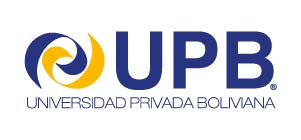Title of the project:
Total reuse of surplus water from the soap plant at Unilever Andina Bolivia
Responsible:
Ramiro Escalera Ph. D.
E-mail: rescalera@upb.edu
Researchers:
Eduardo Rivera A., Student.
Javier Flores A., Student.
Summary:
Unilever Andina Bolivia, in its soaps plant, generates surpluses of good quality hot water that are currently discarded into sewers without any benefit. In compliance with its environmental policies and continuous improvement of its processes, the Company proposed a study that analyses the reuse of these surpluses. The cause of the problem lies in the poor operation of the cooling tower and the low flow that carries the relief pump installed in the tank that receives water from the tower.
As a solution to the problem, the following objectives were raised: (a) establish water and energy consumption in the water recycling system; (b) Evaluate the performance of the cooling tower and optimize the water transport system in the recycling system; (c) determine the financial viability of the implementation of the improvements in the transportation system.
The most important results of the study were:
- Eventually, 8 - 9 m3 of hot water is discarded per 16-hour workday, representing 142.8 kWh of unused energy; 541.2 kWh of energy is consumed in the transport system.
- The cooling tower operates only at 5% of its design capacity, with a temperature drop of only 2 °C. Ensuring a drop of 10 ° C, surpluses will be avoided. A change of diameters (to 4”) in 3 lines of the transport system produces a saving of 46, 29% in energy consumption and an increase in water transport capacity by 3.6 times its current capacity.
- The financial viability of the change in diameter in the lines of the pumping system is positive in the two alternatives proposed, with the following results:
- Diameter change in 3 lines. Galvanized steel option: VAN = 137 997.16 Bs .; IRR = 17.79%; Investment recovery period of 7.37 years in a life time of 20 years. PVC option: VAN = 163 334.63 Bs; IRR = 66.61%; investment recovery period of 1.65 years in a project life of 10 years.
- Diameter change of 2 transport lines from lower to upper tank. Galvanized steel option: VAN = 132 917.92 Bs; IRR = 31.42%; recovery period of 3.80 years in a lifetime of 20 years. PVC option: VAN = 116 219.81 Bs; IRR = 111.45%; recovery period of 0.97 years in a life period of 10 years.
References about the project: rescalera@upb.edu
